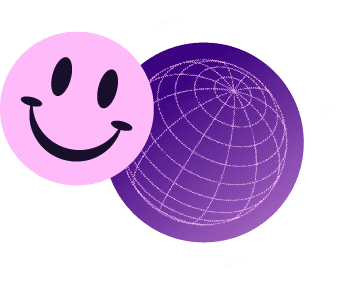Introduction
Choosing between a web app vs software is a pivotal decision for any business. This choice doesn’t just define how your organisation operates—it impacts your scalability, customer engagement, and long-term success.
Web apps, accessible through any internet-connected device, shine in collaboration and accessibility. Software, installed directly on devices, often delivers superior performance and security. The differences extend beyond functionality; they influence user experience, development costs, and maintenance requirements.
In this guide, we’ll explore 5 powerful insights that demystify the debate between web app vs software. By the end, you’ll understand the strengths and weaknesses of both, equipping you to make the right decision for your business. Whether you’re a startup planning your first application or a company modernising its infrastructure, these insights are your roadmap to success.
What is a Web App?
A web app is a software application that runs in a web browser. Unlike traditional software that is installed on a specific device, web apps are hosted on remote servers and accessed over the internet. This approach makes them versatile, cost-effective, and accessible across multiple platforms.
Technologies Behind Web Apps
Web apps are built using web technologies such as:
- HTML: Provides the structure of the application.
- CSS: Adds styling to ensure a polished, user-friendly design.
- JavaScript: Powers interactivity and dynamic content.
Modern web apps often leverage frameworks like React, Angular, or Vue.js for enhanced functionality, while backend technologies like Node.js or Ruby on Rails handle server-side logic.
Key Features and Use Cases
Web apps excel in the following areas:
- Accessibility: Accessible on any device with a browser and internet connection. No downloads or installations are required.
- Real-Time Collaboration: Ideal for tasks like project management, as multiple users can interact simultaneously.
- Cost-Effectiveness: Lower development costs compared to building and maintaining traditional software for multiple platforms.
- Scalability: Can accommodate growing user bases without significant changes to the infrastructure.
Examples of Popular Web Apps
- Google Docs: Allows real-time collaboration on documents.
- Slack: Facilitates team communication through a browser or mobile app.
- Canva: Provides design tools accessible through any web browser.
Web apps are a powerful solution for businesses seeking flexibility and accessibility, especially for teams working remotely or across multiple devices.

What is Software?
Software refers to applications that are installed directly onto devices such as desktops, laptops, or mobile phones. Unlike web apps, the software operates locally, utilising the full processing power and resources of the device it is installed on. This often results in faster performance and a wider range of functionalities.
How Traditional Software Operates
- Local Installation: Software is downloaded and installed on a specific device. Examples include Microsoft Office, Adobe Photoshop, or AutoCAD.
- Resource Utilisation: Since it runs locally, the application can leverage the device’s hardware, including CPU, GPU, and memory, to deliver robust performance.
- Offline Access: Software typically doesn’t require an internet connection to function (though updates or cloud features might need connectivity).
Key Features and Use Cases
Traditional software stands out in these areas:
- Performance: Higher processing power and reduced latency make software ideal for resource-intensive tasks like video editing, CAD design, or gaming.
- Customisation: Software often provides extensive customisation options, particularly for specialised industries like engineering or healthcare.
- Security: With data stored locally and limited exposure to the internet, software can be more secure against cyber threats.
- Reliability: Software ensures consistent functionality regardless of internet connectivity.
Examples of Popular Software Applications
- Microsoft Excel: Advanced spreadsheet management with offline capabilities.
- Photoshop: Professional-grade photo and graphics editing software.
- QuickBooks: Accounting software designed for small and medium businesses.
Traditional software is often the preferred choice for industries that require high performance, specialised features, or offline functionality. However, its dependency on specific devices can limit accessibility compared to web apps.
How Traditional Software Operates
- Local Installation: Software is downloaded and installed on a specific device. Examples include Microsoft Office, Adobe Photoshop, or AutoCAD.
- Resource Utilisation: Since it runs locally, the application can leverage the device’s hardware, including CPU, GPU, and memory, to deliver robust performance.
- Offline Access: Software typically doesn’t require an internet connection to function (though updates or cloud features might need connectivity).
Key Features and Use Cases
Traditional software stands out in these areas:
- Performance: Higher processing power and reduced latency make software ideal for resource-intensive tasks like video editing, CAD design, or gaming.
- Customisation: Software often provides extensive customisation options, particularly for specialised industries like engineering or healthcare.
- Security: With data stored locally and limited exposure to the internet, software can be more secure against cyber threats.
- Reliability: Software ensures consistent functionality regardless of internet connectivity.
Examples of Popular Software Applications
- Microsoft Excel: Advanced spreadsheet management with offline capabilities.
- Photoshop: Professional-grade photo and graphics editing software.
- QuickBooks: Accounting software designed for small and medium businesses.
Traditional software is often the preferred choice for industries that require high performance, specialised features, or offline functionality. However, its dependency on specific devices can limit accessibility compared to web app vs software.

5 Powerful Insights on Web App vs Software
When deciding between a web app vs software, understanding their differences is essential. Here are 5 powerful insights to guide your decision:
Insight 1: Accessibility
- Web App: Accessible from any device with an internet connection. Web apps shine in environments where cross-platform compatibility and mobility are crucial, such as remote work or global teams.
- Software: Typically installed on a specific device. While software offers a more controlled environment, it limits access to the device where it’s installed.
Key Takeaway: Choose a web app if accessibility and platform independence are priorities. Opt for software when access is needed in a controlled, device-specific setting.
Insight 2: Updates and Maintenance
- Web App: Updates are applied server-side, ensuring all users always have the latest version without the need for downloads or installations. This makes maintenance simpler for businesses and seamless for users.
- Software: Updates are installed manually on each device. While this allows for user discretion, it can lead to inconsistencies and delays in adopting updates.
Key Takeaway: A web app is ideal for businesses looking for streamlined updates. Traditional software may suit environments where user control over updates is necessary.
Insight 3: Performance and Features
- Web App: Web apps rely on internet connectivity and browser performance, which can limit speed and functionality. They excel in real-time collaboration but may struggle with resource-intensive tasks.
- Software: Runs directly on the device, leveraging local hardware for optimal performance. This makes it the go-to solution for applications requiring high computational power, like video editing, 3D modelling, or large-scale data analysis.
Key Takeaway: Software is better suited for resource-heavy operations, while web apps are ideal for tasks requiring collaboration and broad accessibility.
Insight 4: Security and Data Protection
- Web App: Security depends heavily on the hosting server and internet connection. Web apps face challenges such as cyberattacks or data breaches but can mitigate risks with strong encryption and secure hosting.
- Software: Data is stored locally, reducing exposure to external threats. However, physical security of the device and regular updates are essential to prevent vulnerabilities.
Key Takeaway: Choose software for applications with highly sensitive data that need local storage. Web apps are viable if robust cybersecurity measures are in place.
Insight 5: Cost and Development Complexity
- Web App: Lower initial development costs and scalability make web apps an attractive option for startups or small businesses. However, ongoing server and hosting expenses may add up over time.
- Software: Higher upfront costs due to platform-specific development and more resource-intensive customisation. However, these costs may balance out for long-term, feature-rich deployments.
Key Takeaway: Web apps are cost-effective for businesses looking for quick scalability. Software is ideal for organisations investing in long-term, feature-rich solutions.
By understanding these five insights, you’ll be better equipped to determine whether a web app vs software is the right choice for your business needs.

How to Choose the Best Option for Your Business
The choice between a web app vs software hinges on your business’s specific goals, needs, and priorities. Here are key factors to consider when making this decision:
1. Align with Your Business Goals
- Web App: If your business prioritises accessibility, collaboration, and mobility, a web app is often the best fit. For instance, startups looking to reach a global audience quickly benefit from the cross-platform capabilities of web apps.
- Software: For businesses needing high-performance, offline functionality, or resource-intensive features, traditional software is more suitable. Industries such as engineering, healthcare, or video production often lean towards custom software for these reasons.
Pro Tip: Evaluate how the solution supports your short-term and long-term goals. Scalability and adaptability should play a key role in your decision.
2. Assess User Needs and Expectations
- Web App: Users who need access from various devices and locations prefer web apps. Examples include employees working remotely or customers accessing services on the go.
- Software: If your users value speed, offline availability, or robust functionalities, traditional software meets these needs better. Think of scenarios like graphic design or localised data processing.
Key Question: Will your users require constant internet connectivity, or do they need reliable offline functionality?
3. Budget Constraints and Development Timeline
- Web App: Web apps generally cost less to develop and deploy initially. They’re ideal for businesses with tight budgets or fast turnaround requirements. However, recurring costs for server maintenance and hosting can add up over time.
- Software: Requires a larger upfront investment but offers greater control and customisation. For businesses with long-term budgets, software may provide better value over its lifecycle.
Pro Tip: Determine your total cost of ownership (TCO), including development, maintenance, and potential upgrades.
4. Integration and Scalability Requirements
- Web App: Designed for scalability, web apps allow you to expand features and handle increased traffic without major overhauls. Integration with third-party services is typically seamless.
- Software: While scalable, traditional software may require significant updates or reengineering to accommodate growth or integrate new systems.
Key Insight: If rapid growth or integration with multiple platforms is part of your business plan, web apps offer more flexibility.
5. Industry-Specific Requirements
- Web App: Industries like eCommerce, education, and SaaS thrive on web apps due to their wide accessibility and real-time collaboration capabilities.
- Software: The manufacturing, finance, and healthcare industries often favour traditional software for its robust security and advanced functionalities.
Key Insight: Map your industry’s common practices to the strengths of web app vs software.
By considering these factors, you can align your choice with the needs of your business, your users, and your overall vision.

Case Studies and Success Stories
Learning from real-world examples can provide valuable insights into the benefits and challenges of choosing between web apps and traditional software. Here are two case studies highlighting how businesses thrived with each approach:
Case Study 1: Success with a Web App
Business Type: Online Education Platform
Challenge: A startup aimed to deliver an accessible and scalable online learning platform for students worldwide. The platform needed real-time collaboration features, like shared notes and live quizzes, and seamless integration with video conferencing tools.
Solution: The company opted for a custom-built web app developed with React.js and Node.js. It allowed students and instructors to interact in real time from any device with a browser, eliminating the need for downloads or installations. The app integrated with third-party tools like Zoom for live classes and supported rapid scaling during peak periods, such as exam seasons.
Outcome:
- Increased Accessibility: Students accessed the platform from over 20 countries without compatibility issues.
- Enhanced Collaboration: Real-time features boosted student engagement and instructor satisfaction.
- Scalability: The platform handled a 300% increase in traffic during its first year.
Key Insight: Web apps excel in providing wide accessibility and real-time features, making them ideal for global, collaborative environments.
Case Study 2: Success with Software
Business Type: Automotive Manufacturing Firm
Challenge: The company needed a robust system to manage its production lines, automate inventory tracking, and ensure data security. Offline functionality was essential due to limited internet access in some manufacturing plants.
Solution: A custom software application was developed to run directly on the firm’s internal network. Built with a focus on speed and security, the software featured advanced data analytics, automated workflows, and seamless integration with existing ERP systems.
Outcome:
- Improved Efficiency: Automated workflows reduced production downtime by 25%.
- Enhanced Security: Data remained secure within the company’s network, reducing risks of breaches.
- Customisation: Features were tailored to the specific needs of each plant, ensuring maximum productivity.
Key Insight: Traditional software is ideal for industries requiring offline functionality, high performance, and robust security.
These case studies illustrate how aligning your choice with your business’s unique needs and challenges can lead to success.
Conclusion: Making the Right Choice
Choosing between a web app vs software is a decision that requires a deep understanding of your business’s unique needs, goals, and challenges. Both options have distinct advantages:
- Web apps excel in accessibility, scalability, and real-time collaboration, making them ideal for businesses that prioritise mobility and global reach.
- Traditional software offers superior performance, offline functionality, and robust security, making it the preferred choice for industries with resource-intensive operations or sensitive data requirements.
The key to success lies in aligning your choice with your business objectives, your users’ expectations, and your long-term growth plans. Whether you need a cutting-edge web app vs software for complex internal processes, the right decision can transform your operations and drive sustainable growth.
At SourceCodeStudio, we specialise in crafting custom web apps and software tailored to your specific needs. With a deep understanding of both technologies, we’re here to guide you through every step of the process, ensuring your solution is not only functional but also future-proof.
Ready to bring your vision to life? Book your free 30-minute consultation with our expert team today and discover how we can help your business thrive.







